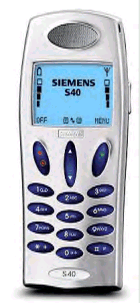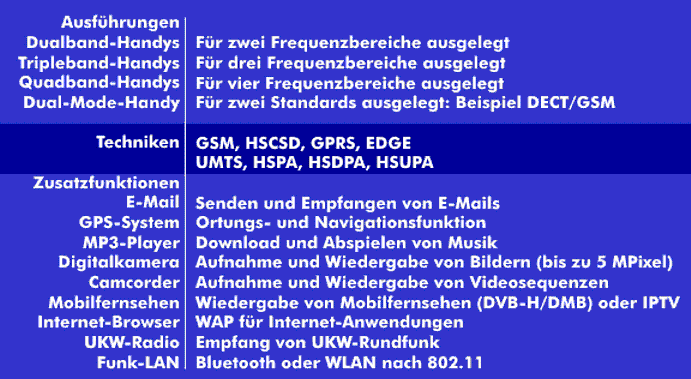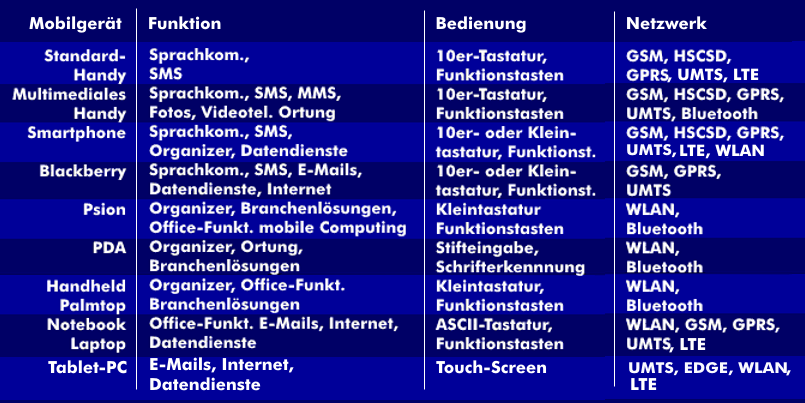cellphone
Cell phone is the name for a handy, portable, battery-operated radio telephone. It forms the mobile station of a mobile communications system and consists of a transmitting and receiving unit with a patch antenna, the cell phone keypad, the units for voice input and output, the display, the connection devices for external devices, and the battery section. Correspondingly simple cell phones are also called dumbphones.
The transmitting part of a cell phone supports the uplink frequency range of the corresponding cellular network. For GSM, this range is between 890 MHz and 915 MHz, for DCS 1800 between 1.710 GHz and 1.785 GHz, and for UMTS between 1.900 GHz and 2.200 GHz. The transmit power is 2 W in the 900 MHz frequency range, and 1 W at higher frequencies of 1.8 GHz and 2.2 GHz. For LTE cell phones, it is 200 mW.
Cell phones have a dial keypad with numeric keys that are also alphanumeric. They also have function keys for menu control and establishing and terminating connections.
Voice input is via the microphone, usually a miniaturized MEMS microphone, with a downstream microphone preamplifier; voice output is via a piezo speaker, which can also be used for signal cues. For menu display, as well as for short message display, the phones have a more or less large display with CIF display format or also with higher resolution. This display can be used for picture and video communication, it is also used to check the battery level and to display the reception field strength.
UMTS cell phones also contain a video and digital camera with LED flash and a larger color display. Since all cell phones and smartphones are extremely compact, no conventional lens system can be used. The lenses are microlenses or liquid lenses based on the electrowetting effect, in which liquids are deformed by voltages.
Cell phone interfaces
Interfaces include sockets for the AC adapter, car mounts, external antennas and connection options for a fax machine. The decisive parameters for a cell phone are its dimensions, weight and operating time without battery recharging.
There are cell phones that work according to the DECT standard in in-house operation and according to the GSM standard or UMTS in out-of-home operation. These devices, which combine two standards in a single device, are also referred to as dual- mode cell phones. There are similar developments in the field of satellite cell phones, which support the GSM standard in addition to satellite communication. If a cell phone is designed for two different frequency ranges, it is a dual-band cell phone; if it can operate in three frequency ranges, it is a triple-band cell phone; and if it has four frequency ranges, it is a quad-band cell phone. Such cell phones are available because, for example, GSM uses the 450 MHz, 480 MHz, 850 MHz, 900 MHz, 1,800 MHz and 1,900 MHz frequency ranges in various countries.
Other RF technologies in cell phones
Other cell phones support Bluetooth and WLAN technology, allowing the user to use stationary and mobile hotspots and to dial into the Internet via WLAN at low cost. In addition, there are cell phones for positioning and navigation using the GPS system. The integrated GPS modules enable the cell phone user to identify the locations of call partners, and appropriate navigation software makes it easier to determine routes. The location function is intended to support emergency calls, since many emergency callers are unable to describe their location with sufficient accuracy.
With faster transmission rates, smartphones with digital cameras have been developed for video telephony, Internet surfing and TV cell phones for mobile TV( MDTV).



